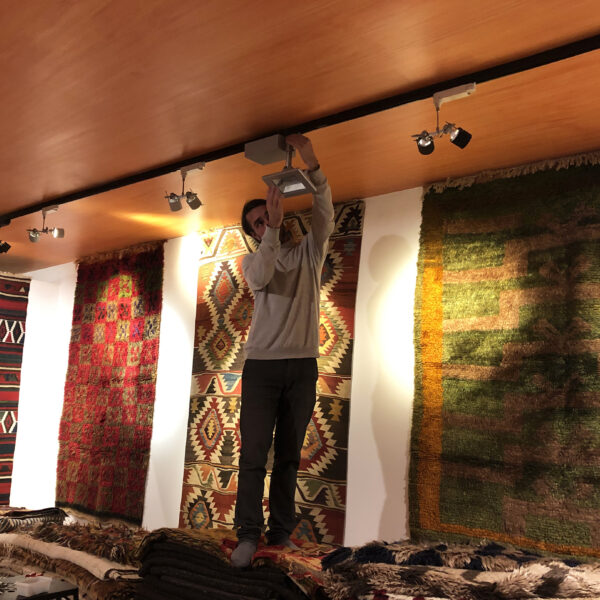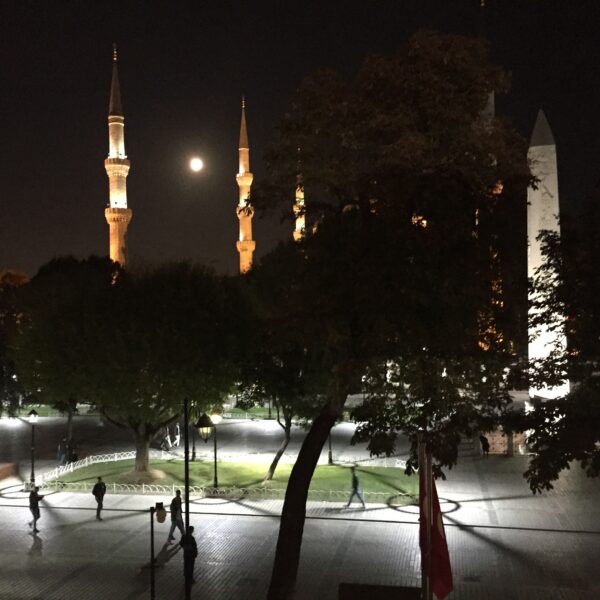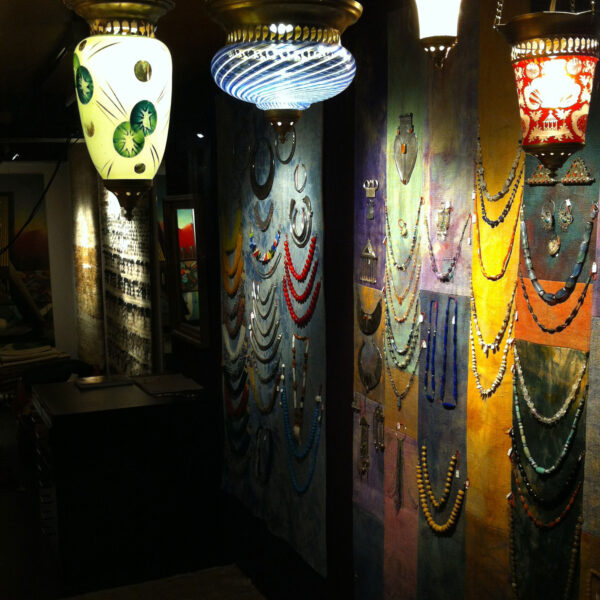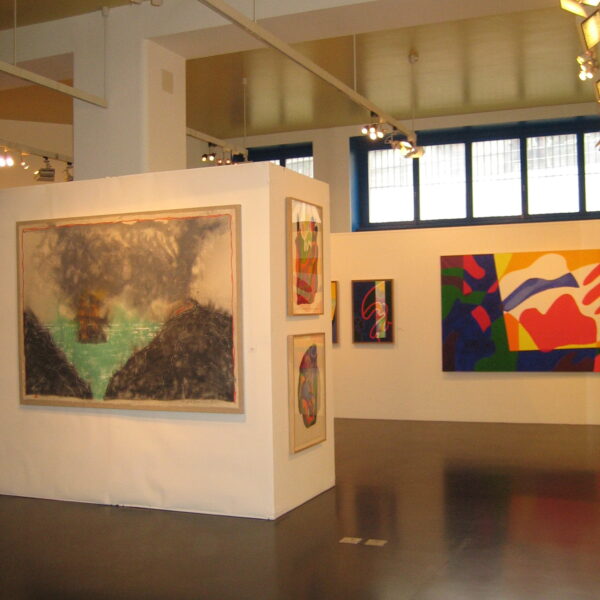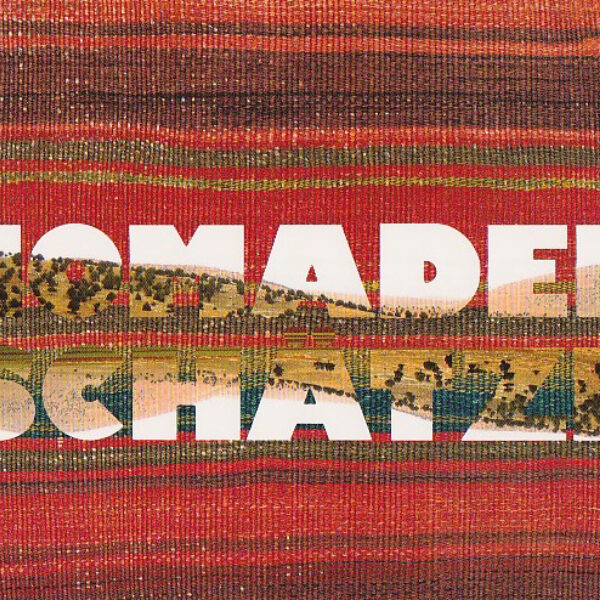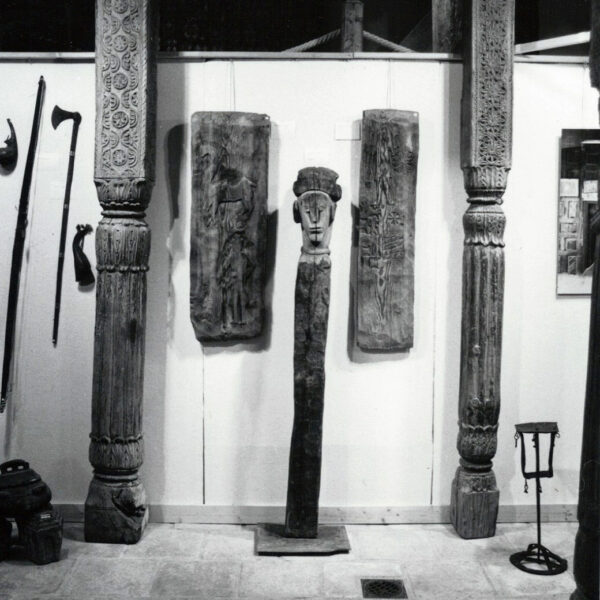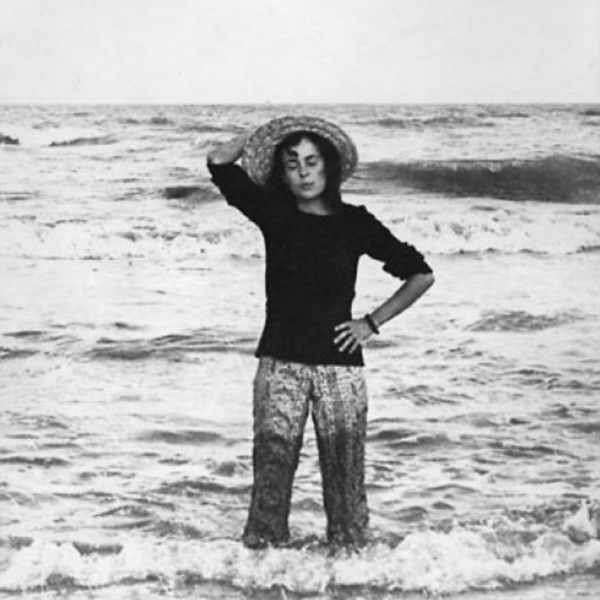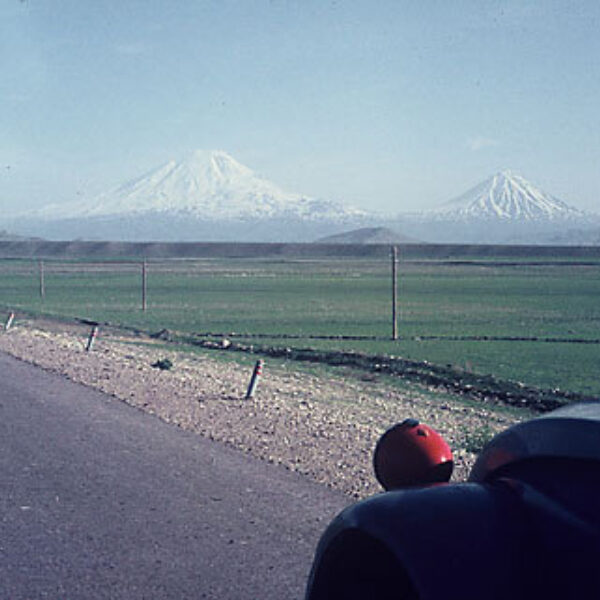


2017 A new wind blows!
A new team works in the store on a regular basis. Simone, Lisa, Anatole and sometimes Fidel. Three artists and a journalist.
We all were in Turkey together in spring 2019 for nine days, in Istanbul and Central Anatolia. The team already had a good basis of knowledge about kilims. But is only one side of the medal. You have to meet the people you're working with, enjoy the wonderful Turkish food, watch the weavers at their looms, visit museums, shops, bookstores, wander around, marvel at the Centralanatolien landscape. Everything will merge, like a puzzle put together.
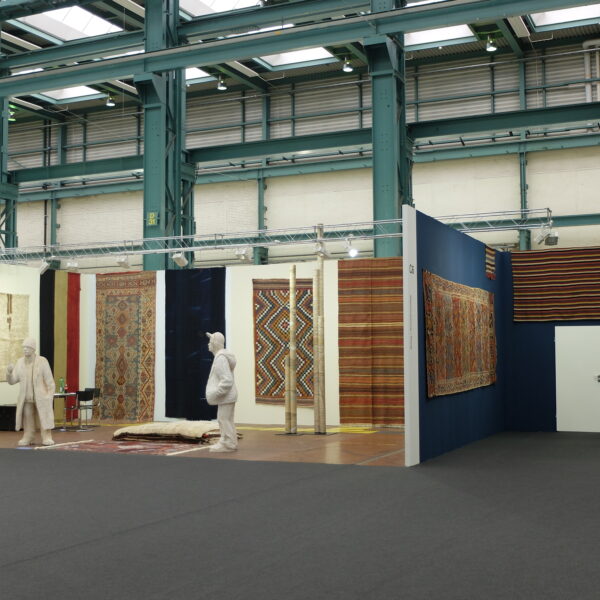
TONI HUTMACHER 23.11.1942–16.6.2013
We miss Toni. He was a profound, creative man and a dear friend
Toni Hutmacher and Arlette Bollag founded 'Nomadenschaetze' (Nomadic treasures) together in 1979 and together they did everything it took, from purchasing to selling. In addition, there were many journeys, alone or together, beautiful, exciting thirty-four years long.
As our friend Henri Daumas wrote so beautifully in his obituary in HALI:
'For a long time I was unaware of Toni Hutmacher. I met him a good while after I had met his wife, Arlette Bollag, a lively woman with a charismatic personality and an infectious love for old kilims. Toni seemed more difficult at first. He was a quiet man who didn't talk for the sake of talking. I quickly realised that behind this taciturn manner lay the secret of a rich and strong personality. In the course of shared journeys to Venice and Anatolia I got to know him and took great pleasure in discussing our mutual passions.
A professional architect, he had studied at one of the best Swiss universities, the ETH in Zurich, and was very avant-garde in his concepts. The spaces he created always felt amazingly good to live in, light and thoughtful on a perfect human scale. Both he and Arlette had travelled extensively from the late Sixties on; for them, the language of form, colour and the composition of the kilims was a revelation. They shared this passion for forty years.
The first major exhibition of Nomadenschätze, Toni and Arlette's company, was held in Gstaad in January 1979. Later, after suffering health problems he spent more time in Valle Onsernone, a wild mountain valley in Ticino. Cultivated, refined to his fingertips, he spent a lot of time with his cats, with whom he shared the mystery. Often Arlette would join him and their beautiful house would be filled with friends.
In the old days, when Nomadenschätze was exhibiting in a medieval mill near Zurich, the openings and celebrations were almost legendary: full of music, the smell of kebab cooking on the fire in their yurt outside and Toni dancing barefoot all night long. This spirit was still alive in their Russo house, albeit on a somewhat mellower scale. Toni would descend regularly from this Belvedere and travel to the shop in Zurich. There he would open all the kilims and feast his eyes on their beauty, which never ceased to amaze and nourish him.
Toni, golden-hearted, moved through life slowly, with strength and tranquillity. His strength was reflected in his face, which had the noble aspect of a Roman emperor. It concealed an uncommon sensitivity and intuition, which enabled him to appreciate and assess the beauty of a kilim at first glance.
Toni was like an immutable statue placed in front of the temple of kilims. And all of a sudden he's not here any more to caress their wonderful wool in the same way he caressed his cats.
Sleep, dear Toni, may your calm memory appease the sadness of our loss.'
2009 – NOMADENSCHÄTZE AT NEUMARKT 13
For our 30th anniversary we are back in the old town, not on Kirchgasse but on lively Neumarkt.
a happy development and new impulses for us. As much as we felt at home on Kirchgasse, Neumarkt is more diverse. A good grocery store, different branches, also craftsmen — which makes us very happy — restaurants and the theater. Our new space is a lot smaller and lower than it was at Kirchgasse 25, so it is a different approach to the ancient kilims, which there could be shown in all their majesty. Here at Neumarkt, this is not possible in this form. To properly see the magnificent kilims they have to be put on the floor inside the shop, or outside unto the street in fine weather. But this is kind of similar to bazaars in the Orient. Only that here you can walk in just to look around and will be left alone if you wish. Of course we are happy to explain and show everything.

TRAVELLING 1969–
very often. Loving it. To discover. To buy. Hardly ever both activities at the same time.

1979-1990 NOMADENSCHAETZE IN THE WEYRMÜHLE IN MURI
We were looking for a large room in the countryside for the fall of 1979 and found the Weyermühle, a mighty timber-framed house, first mentioned in the 14th century. The converted room was high enough for our longest kilims, mighty wooden pillars and showcases built into the former stream, bed for our jewelry, were ideal. In front of the entrance door we set up our yurt and in the beginning we also slept and cooked in it. Friends, visitors and their children still remember long evenings and nights by the fire.
In the beginning we were rather exotic in the village, but that changed soon. Old farmer's wives came, touched the antique kilims and said to us: 'Well, these are much too cheap. Well, I wouldn't be able or willing to weave it that way. They knew what they were talking about.
The first years the mill was our 'winter camp', we lived and worked in Zurich. Or were on the road in Afghanistan, Pakistan and Turkey, looking for and finding beautiful kilims, carpets, embroidery and jewelry. We met people with the same passion. Later we lived in Muri in the summer, in an attic, a long room, like a tent, right next door. So we commuted between Zurich, where we had a big exhibition every year, and Muri back and forth.
It was a lively and inspiring time, with up to four exhibitions a year, lectures, readings, concerts and parties until the early morning hours.
1979-2002 THE KIRCHGASSE. OUR PLACE, AGAIN AND AGAIN
The first large exhibition in the fall of 1979 in the 'Karl der Grosse', the last in house no. 25.
We both had a strong connection to the old town for many years. From the former coffee house 'Karli', where we exhibited several times, to a Student House at Kirchgasse 36 (where Beat Schwengeler, a friend, now produces great jewelry) to our high ceilinged vast location at Kirchgasse 25. A perfect place. The inner courtyard with three birch trees was the ideal place for openings and concerts, thanks to our dear neighbours, owners of that little oasis. Unfortunately the house was sold (otherwise we would probably still be there today) and today Werner Bommer has his famous gallery there.
1969 to 1979
how Toni Hutmacher and Arlette Bollag caught the 'kilim bug' and how it changed their lives
It all started with travelling. In winter 1969, Toni Hutmacher, a young architect and his wife Agnes, left for India in an old Citroen 2CV, driving over snowy passes and through deserts in Turkey, Iraq, Baluchistan and Pakistan – meeting tribal folk, and strolling through bazars, looking at colourful rugs and kilims. To buy any was out of the question – the little money they had was reserved for spare parts for their clattering but sturdy little car. It so happened that it actually made it to India and back through Afghanistan, to finally collapse on the Gotthard, one of the main Swiss passes.
In 1970, Arlette travelled by bus, train and the occasional truck very much along the same route and spent hours in the bazars, listening to the dealers, admiring the beauty of rugs and kilims she could not buy for lack of funds and a camel to transport them on.
We met in 1974, and our combined nostalgia held fast and even increased over the years. Collecting on a smal scale and a growing passion for nomadic culture and textiles led to a first big exhibition in 1979, called NOMADENSCHAETZE (nomadic treasures). Being daring greenhorns and still young then, on a whim, we opted for the exclusive Palace Hotel in Gstaad, and put up an old Kirghiz yurt in the elegant exhibition space. It was a big success with the sophisticated clientele, who loved to drink their wodka there, reclining on an antique balisht. ('he looks like Roger Moore' 'It IS Roger Moore'). On show were antique rugs, kilims, Sassanid vases, Uzbek suzanis, ikat panels and ikat coats.
A few months later, we exhibited a complete ikat tent from Bochara in our hometown Zurich, in a big old café next to the cathedral, Karl der Grosse, that was waiting to be renovated. Shabby chic, but improved by covering all the walls with jute.
Travelling in Turkey, Afghanistan and Pakistan in the early Eighties to collect good kilims, Lakai embroideries, felts and antique Baluch rugs, and with curiosity being the best teacher of all, our knowledge grew without us noticing. We listened to tribals and scholars alike, read books and spent hours in museums and bazars. We realized we had become rug and kilim dealers well after others did.

